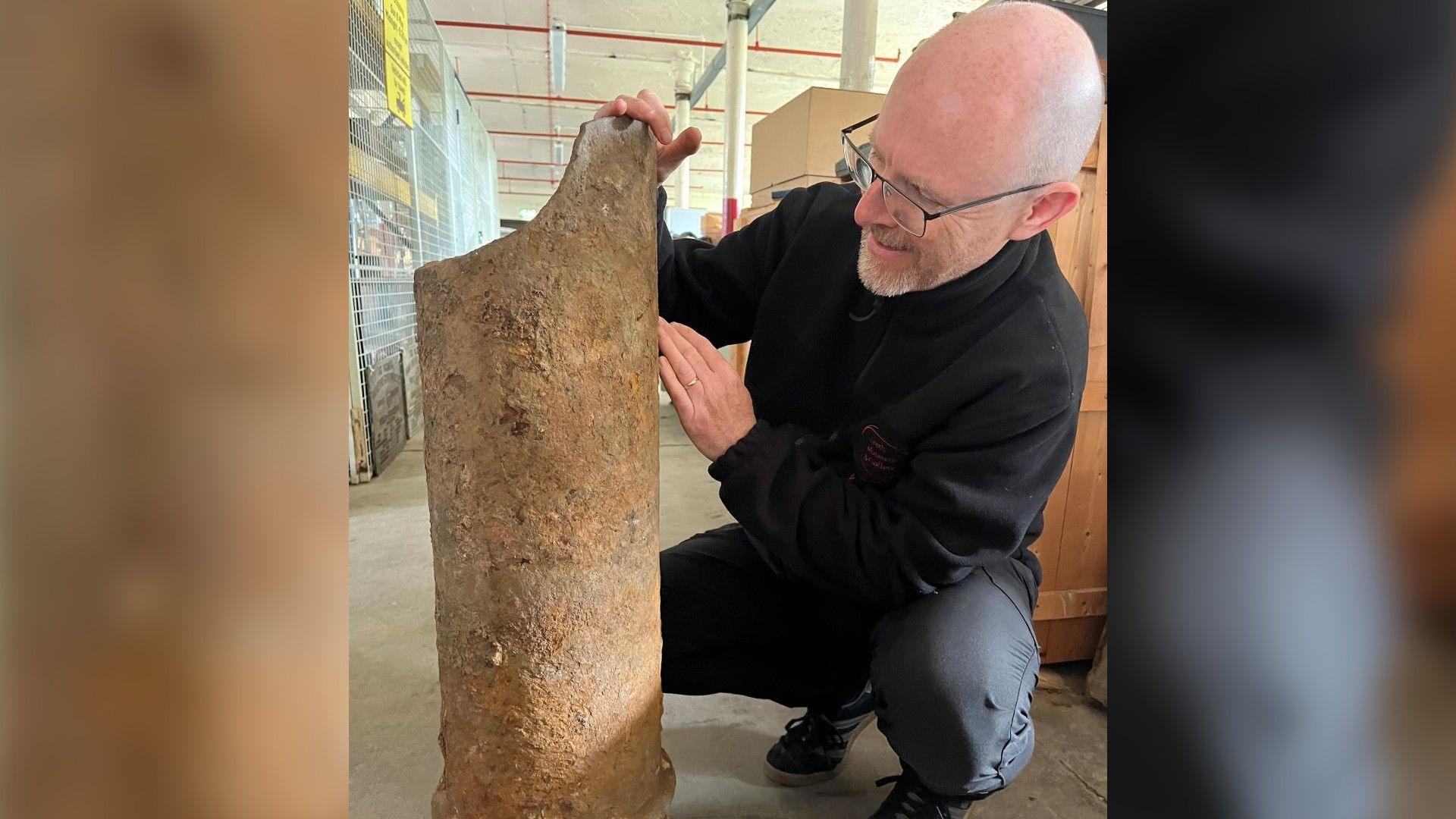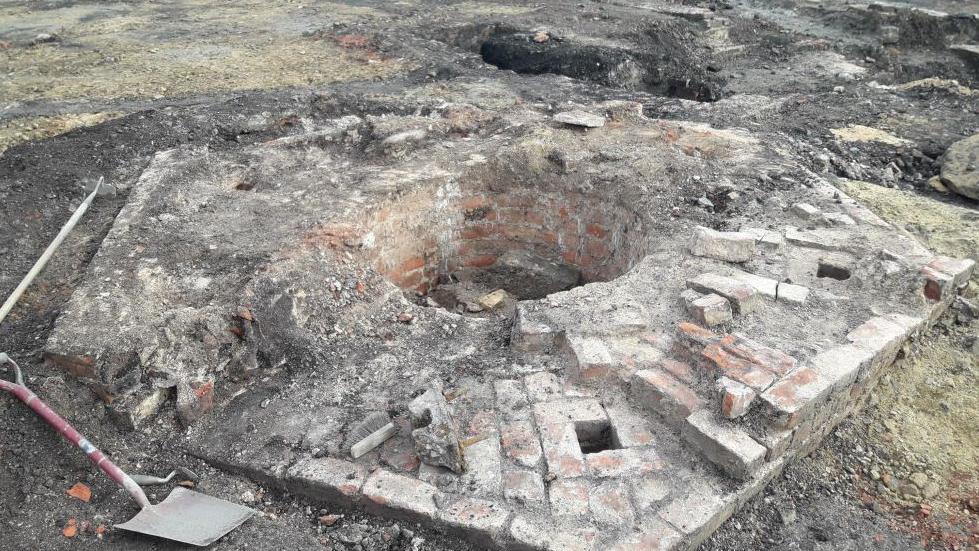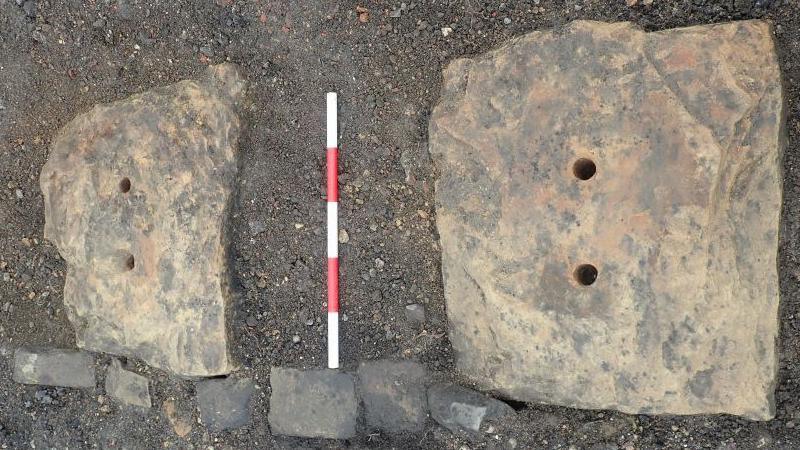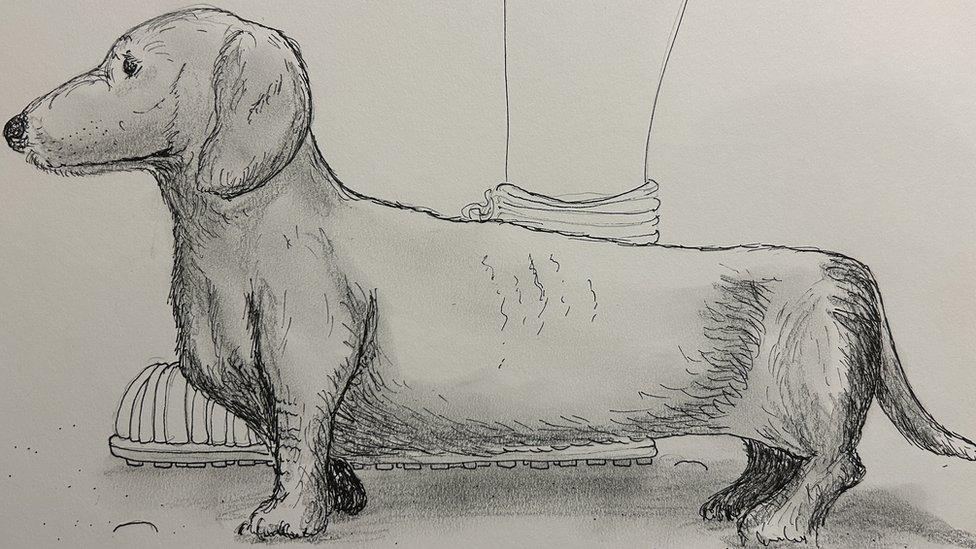Relics of city's first railway station unearthed

Curator John McGoldrick said the discoveries were a a "fascinating reminder of the city's history"
- Published
Relics from Leeds’s first railway station have been unearthed.
The remains of the former Marsh Lane station, which opened 190 years ago, have been revealed during excavation work in the city centre.
There are no known artistic drawings or paintings of the station, meaning there was little to indicate how it may have looked when it began operating in 1834.
It is hoped recovered pieces of the station will go on display at Leeds Industrial Museum.

Archaeologists believe they have uncovered a railway turntable at the site
The Georgian station was part of the Leeds to Selby railway that once ran between Marsh Lane and a station on the River Ouse at Selby.
The first official train to leave Marsh Lane departed at around 06:30 on 22 September 1834.
Among the relics discovered by archaeologists were the remnants of cast iron pillars, which would once have held up the roof of the station and also doubled as rainwater down pipes.
Experts also unearthed stone sleepers, used to secure tracks in the years before wooden sleepers were utilised and which still show the holes where railway spikes were driven through them.

A sleeper discovered during excavation work
Archaeologists discovered that the station had been built on two levels, with the train tracks on a high podium above Leeds and an entrance for passengers at ground level off Marsh Lane.
They also found the remains of a workshop which would have stored, serviced and carried out everyday repairs on the railway’s locomotives.
In the 1860s, the original station was demolished to make way for a grain warehouse, before a revamped station was built in its place.
That station remained in place until its closure in 1958.
The only visible trace of the early station to survive today are a boundary wall and gate piers on Marsh Lane.
'Helped city thrive'
John McGoldrick, Leeds Museums and Galleries’ curator of industrial history, said: “Marsh Lane station played a huge part in establishing the rail network going in and out of Leeds, transporting both passengers and important freight for industries which helped the city thrive in the 19th Century.
He added: “It’s always exciting to have the opportunity to see such a real, tangible part of the city’s past in front of you, and even more so when it’s been buried beneath our feet for more than a century."
Listen to highlights from West Yorkshire on BBC Sounds, catch up with the latest episode of Look North or tell us a story you think we should be covering here, external.
Related topics
Related internet links
Related internet stories
- Published13 April 2024

- Published25 July 2023
